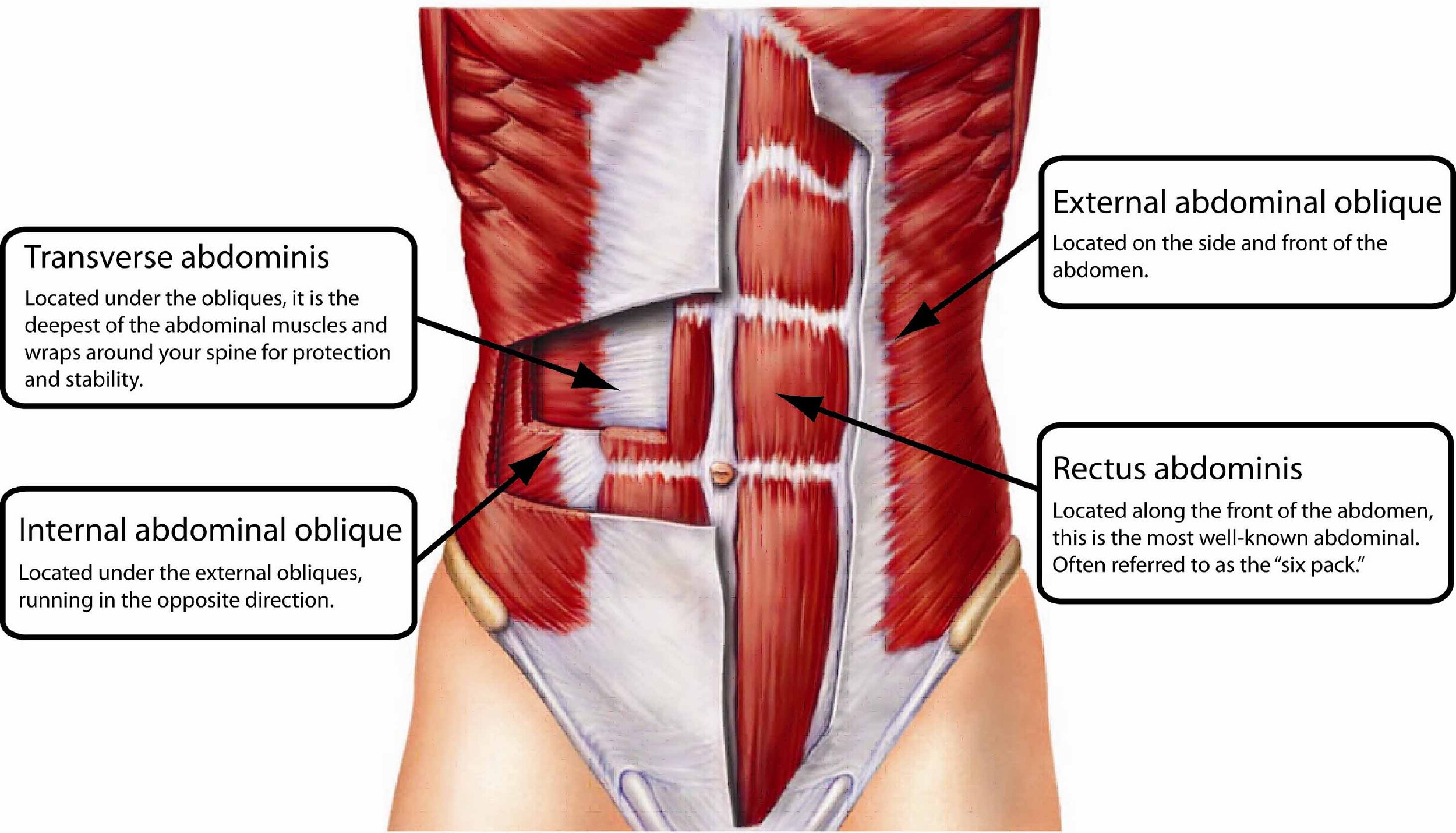“Core stability” is a term that many people have heard, some understand, but very few actively train. You might think that core training is all about sit-ups and getting a flat stomach but it is much more than that.
What exactly is “core strength” or “core stability?”
Your core is made up of three main muscles: Around the back there is Multifidus, around the front there is Transverse Abdominus, and underneath there is the Pelvic Floor.
The unifying feature of these core muscles is that the fibres run AROUND the body; not up and down the body, or diagonally across the body like the other abdominal muscles. This feature means that when Multifidus, Transverse Abdominus, and Pelvic Floor contract together they provide a girdle of strength around the back. This also raises the intra-abdominal pressure which stabilises forces around the intervertebral discs.
Why does core strength matter so much anyway?
Your core muscles are very important for coordinating movement and preventing back pain. You may not notice it, but prior to any movement of your legs your core muscles contract. These core muscles anticipate dynamic forces that may act on the lumbar spine during movement and act to stabilise the area prior to any movement. The timing and co-ordination of this muscle contraction is crucial.
Core stability is crucial to prevent low back pain.
For example, a new post-partum mother usually has a very slack Transverse Abdominus and Pelvic Floor and an overworked Multifidus and therefore typically stands with a hollow back and anterior pelvic tilt. If she is unable to correct the pelvic tilt in the weeks after pregnancy she is at more risk of developing disc injury and low back pain.
Similarly, a builder may develop back pain when they retire as the core stability muscles decondition with rest.
Core stability is crucial for sports performance.
Runners with poor core stability may rotate their torso too much causing inefficient power transfer to the limbs. They may consciously try to stabilise this rotatory movement by stiffening their arm swing. This may cause their shoulders to become painful during a run.
Should I just do some sit-ups?
In short, no! By definition, the deep-trunk muscles act as "stabilisers" and are not involved in producing movements. These muscles do not need to be very strong, but they must be correctly coordinated and capable of working continuously. In addition, we want these stabiliser muscles to act by holding the lumbar spine in the neutral position, which is the correct alignment of the pelvis that allows for the natural 'S' curve of the spine.
What are the best workouts for building core strength?
Good - so you want to improve your core stability!
If you want to find a class then Pilates is a great core strength class. Nordic Walking works on dynamic core strength is a great option too.
Otherwise for home exercises, the aim of core stability training is to effectively recruit the trunk musculature and then learn to control the position of the lumbar spine during dynamic movements.
The foundation of all core-stability training is learning to co-contract the Transverse Abdominus and Multifidus muscles effectively.
Start by lying on your back with knees bent
Your lumbar spine should be neither arched up nor flattened against the floor, but aligned normally with a small gap between the floor and your back. This is the "neutral" lumbar position you should learn to achieve
Breathe in deeply and relax all your stomach muscles
Breathe out and, as you do so, draw your lower abdomen inwards as if your belly button is going back towards the floor. Pilates teachers describe this as "zipping up", as if you are fastening up a pair of tight jeans
Hold the contraction for 10 seconds and stay relaxed, allowing yourself to breathe in and out as you hold the tension in your lower stomach area
Repeat 5-10 times
Once you have mastered the abdominal hollowing lying on your back, practice it with movement to destabilise you. From there you can try other core exercises lying on your front, four-point kneeling, sitting and standing. Learning to recruit the TA and MF muscles correctly in various positions can take anything from one session to one month or more.
Once perfected it is time to move onto more advanced core stability exercises. These might be static positions like the planks, dynamic controlled movements like “superman”, unstable static/dynamic exercise on a Swiss ball, controlling explosive movements like box jumping.
Your practitioner can help to prescribe the exercises that are appropriate for you, your condition, and what you want to achieve.
Some good core exercise ideas can be found here.... start easy, get the techniques right, and then progress!
Beginner floor core exercises https://www.youtube.com/watch?v=nrWbmJPscFI
Beginner planks... https://www.youtube.com/watch?v=fZtVcFJ1hNc
Swiss ball exercises for runners.... https://www.youtube.com/watch?v=2nVKtbn1MEk
Advanced dynamic core stability exercises... https://www.youtube.com/watch?v=UxWkv1paQGc
